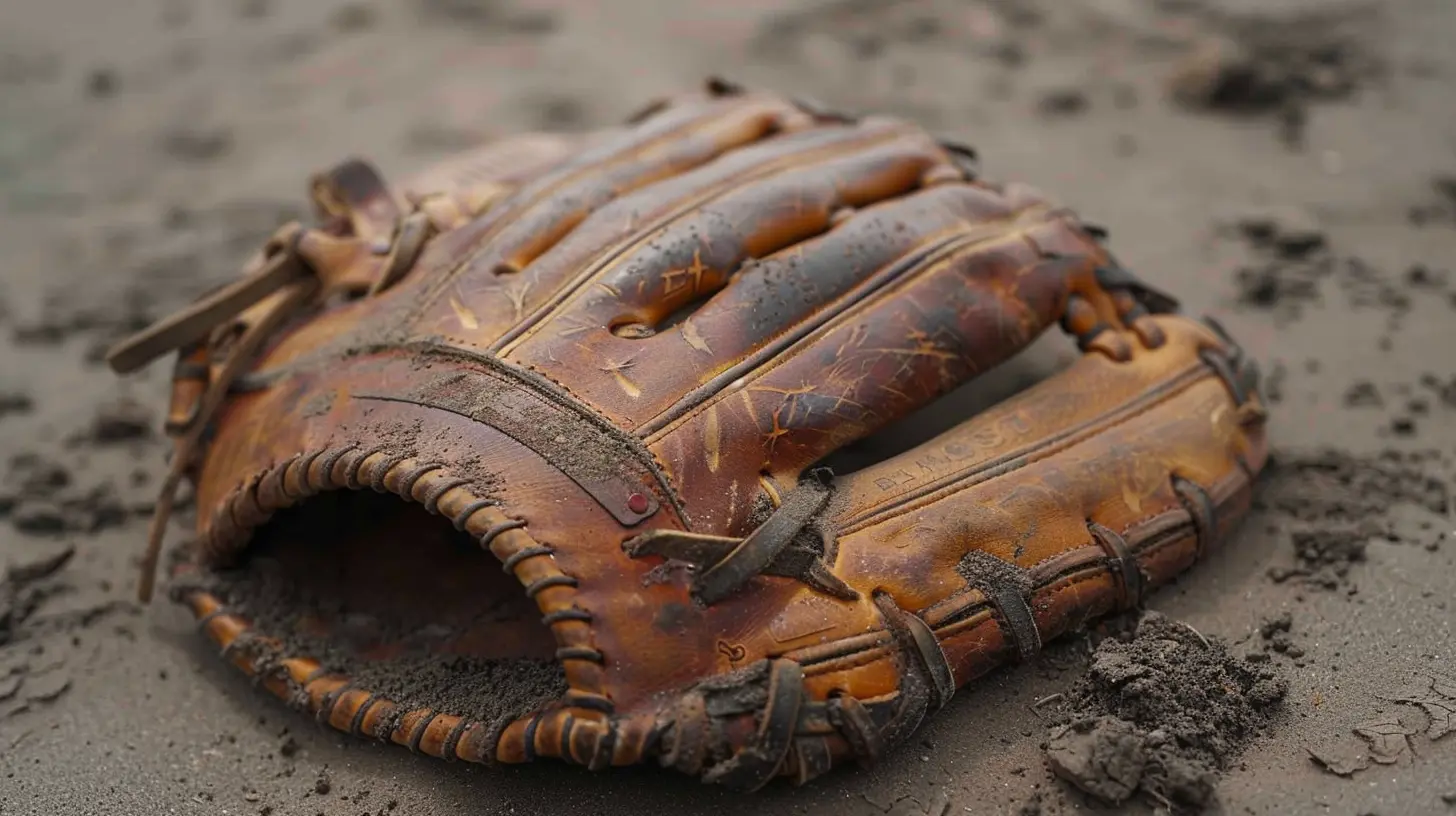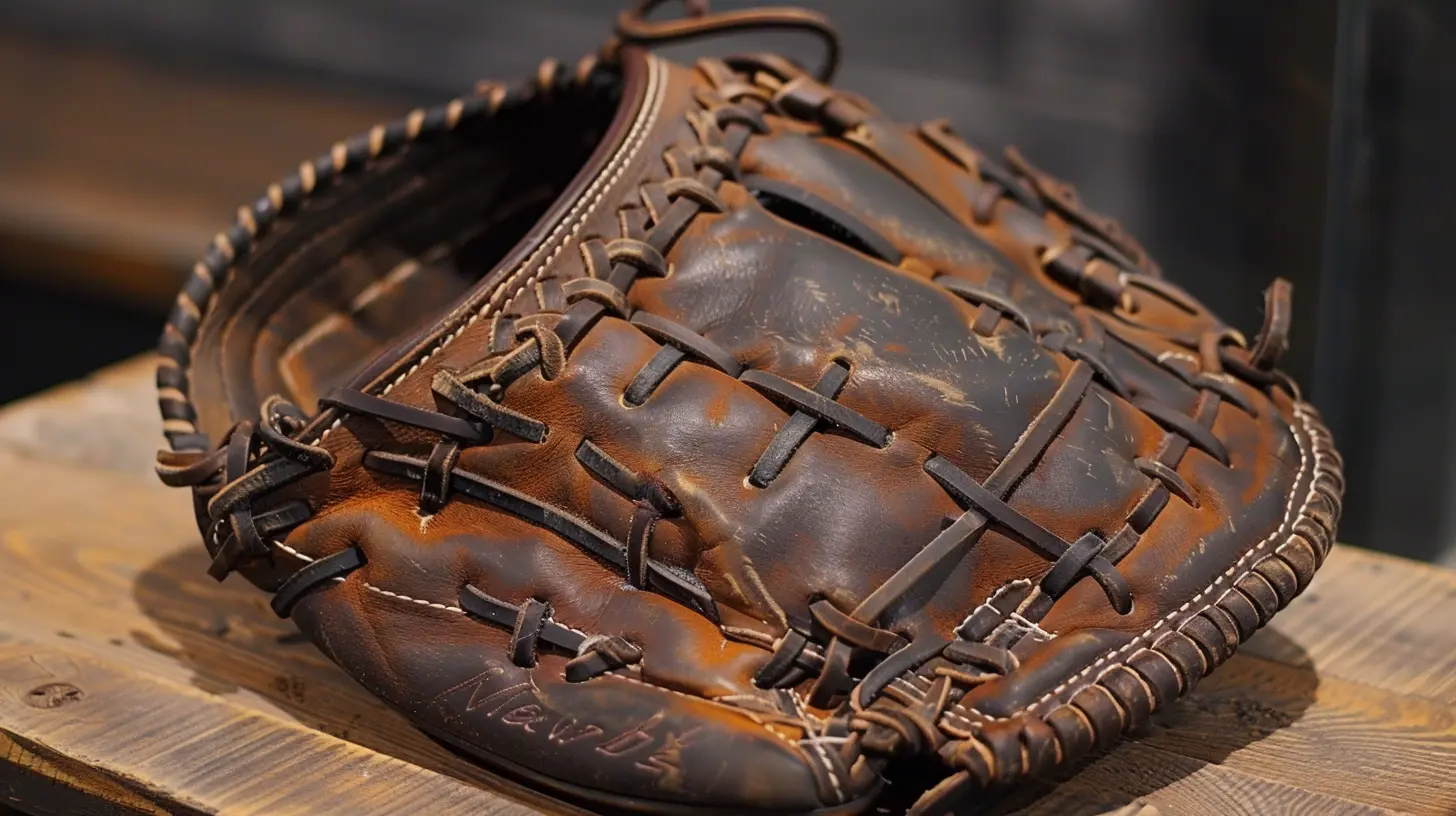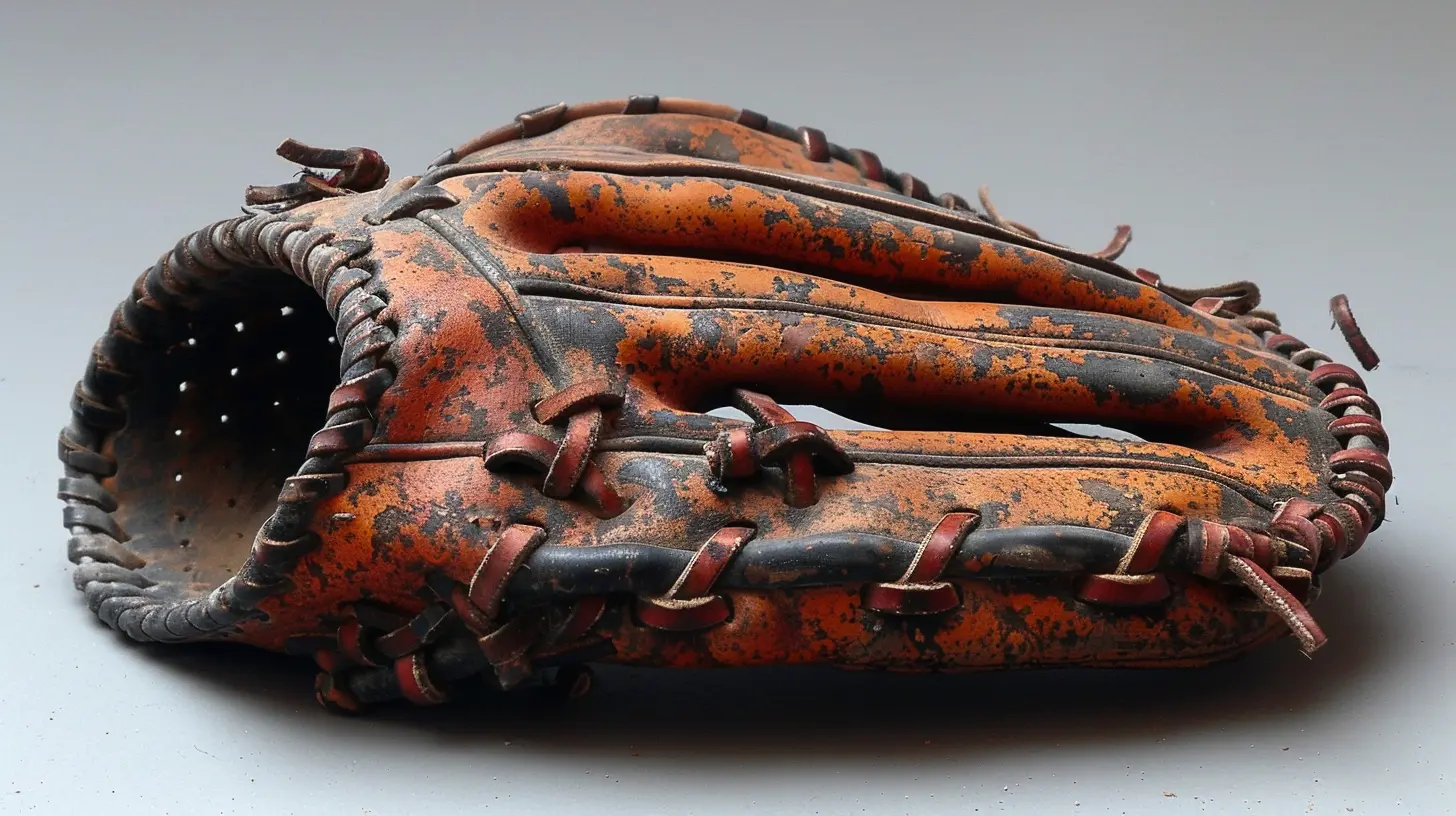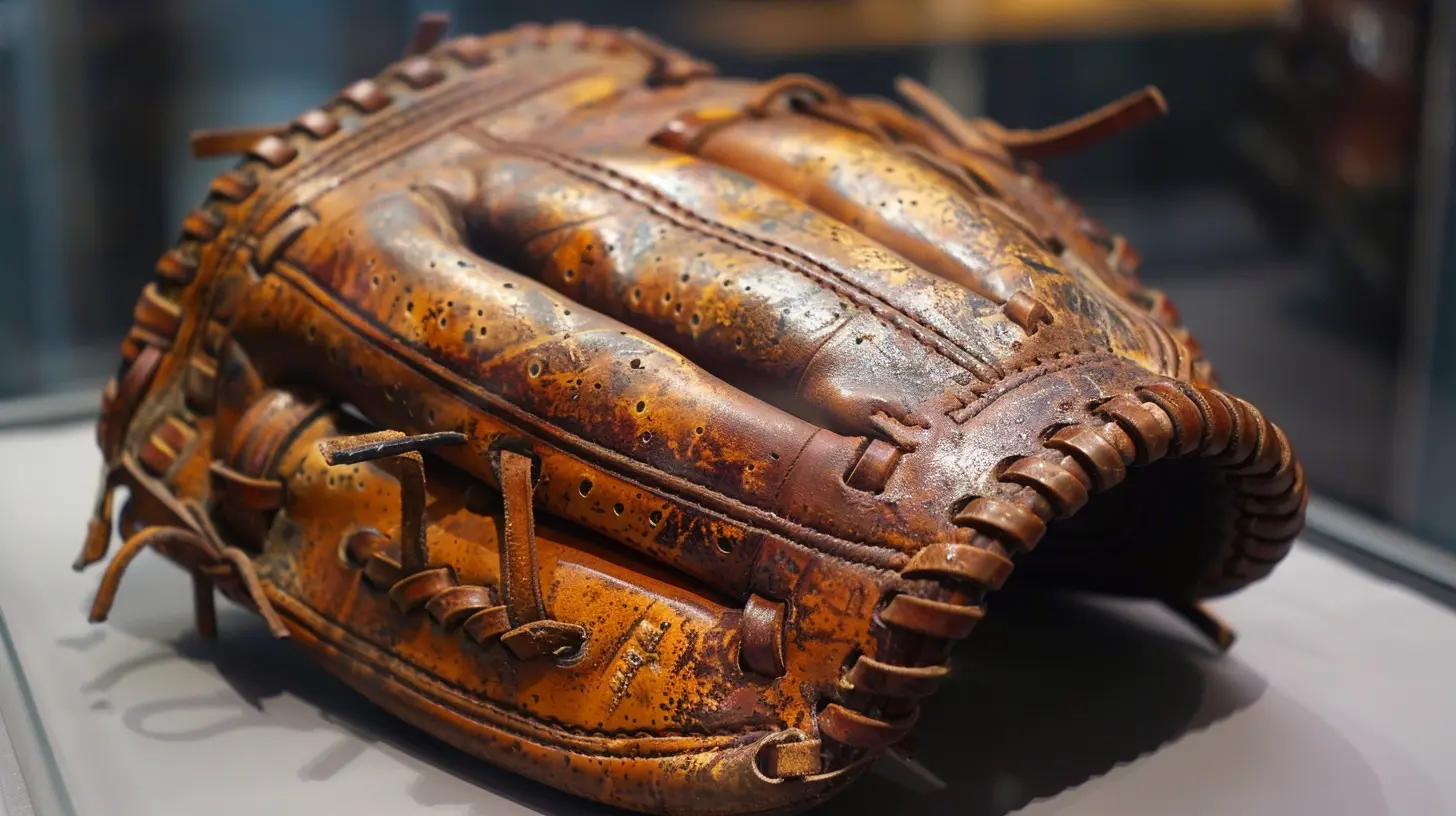How to Properly Break In a Baseball Glove
20 November 2024
Breaking in a baseball glove is an essential step for any player, whether you're a beginner or a seasoned pro. A stiff, brand new glove fresh out of the box just doesn’t feel right. It’s rigid, uncomfortable, and let’s be honest, it doesn’t quite do the job the way you want it to. But don’t worry—this is a rite of passage for every baseball player, and with a little effort and technique, you can turn that stiff glove into a comfortable, game-ready piece of equipment.
In this guide, we’re going to look at various methods to break in a baseball glove properly. From old-school techniques passed down through generations to newer, more modern approaches, we’ll cover everything you need to know to get your glove game-ready. If you're itching to step onto the diamond and start catching fly balls like a pro, read on!
Why Is Breaking In a Baseball Glove Important?
Before we dive into the methods, let’s talk about why breaking in your glove is so crucial.A brand-new baseball glove is often made of high-quality leather that’s naturally stiff and rigid. While this is great for durability, it’s not so great for performance right out of the package. The glove needs to mold to your hand and develop that perfect pocket to catch balls easily. When you break in a glove properly, you make it more flexible, comfortable, and personalized for your playing style.
Think of it like breaking in a new pair of shoes. You wouldn’t want to run a marathon in shoes straight from the store, right? The same goes for your glove—it needs to fit you before it’s ready for the big game.
Methods to Break In a Baseball Glove
There are several tried-and-true methods to break in a glove, and each has its own pros and cons. Let’s explore some of the most popular techniques:1. The Classic: Playing Catch
This is by far the most traditional (and arguably the best) way to break in your glove. Sure, it’s not the fastest, but it's the most natural. Simply put, you’re using your glove the way it’s meant to be used.How to Do It:
- Grab a baseball and start playing catch with a friend.
- Focus on catching the ball in different parts of the glove to help it mold properly.
- Over time, the constant pressure and impact will soften the leather and create a personalized pocket.
Why It Works:
The repetitive motion of catching a ball forces the leather to flex and bend in all the right places. Plus, it gives you the added benefit of getting used to the feel of your glove during actual gameplay. Sure, it may take a few weeks to fully break in, but nothing beats the authentic feel you’ll get from this method.
2. Glove Mallet Method
If you’re looking for a more aggressive, hands-on approach, the glove mallet method might be for you. This technique speeds up the process by mimicking the impact of catching a ball.How to Do It:
- Purchase or use a glove mallet (a small wooden hammer designed for breaking in gloves).
- Place a baseball in the pocket of your glove.
- Pound the pocket and the finger areas with the mallet.
- Continue this process for 10-15 minutes at a time, focusing on the areas where you want flexibility.
Why It Works:
The mallet simulates the impact of a ball hitting your glove, which helps soften the leather faster. It’s a bit like giving your glove a workout. Plus, you can target specific areas that need more flexibility, like the pocket or the hinge points of the glove.
3. The Hot Water Method
This method involves softening the leather using warm water, which helps break down some of its stiffness. Be careful, though—this method can damage your glove if not done properly.How to Do It:
- Heat some water to around 150°F (65°C)—hot, but not boiling.
- Pour a small amount of water over the key areas of the glove (the palm, fingers, and pocket).
- Use your hands to work the glove, bending and folding it repeatedly to soften the leather.
- Play catch or use a mallet to further shape the glove while it's still damp.
- Let the glove air dry naturally (avoid direct sunlight or heat sources).
Why It Works:
The warm water helps to relax the leather fibers, making the glove more pliable. Once the glove dries, it will retain the shape you’ve molded it into. But a word of caution—water can weaken leather over time, so don’t overdo it or use this method too frequently.
4. Glove Steaming
Glove steaming is another popular method used to soften the leather quickly. Many sporting goods stores offer this service, but you can also do it at home with a little care.How to Do It:
- Heat a pot of water until it produces steam (but do not boil).
- Hold the glove over the steam for several minutes, allowing the heat to penetrate the leather.
- Once the glove becomes more flexible, use your hands or a mallet to shape it.
- Let the glove cool down naturally, and avoid using direct heat sources to dry it.
Why It Works:
Steam helps soften the leather fibers, making the glove more flexible in a short amount of time. However, like the hot water method, it’s important not to overdo it, as too much moisture or heat can damage the glove.
5. Glove Conditioners and Oils
If you’re looking for a more gradual approach, using glove conditioners or oils can help soften the leather over time. Many brands sell products specifically designed for breaking in gloves.How to Do It:
- Apply a small amount of glove conditioner or oil to a clean cloth.
- Rub the conditioner into the key areas of the glove, focusing on the palm, fingers, and pocket.
- Let the glove sit for a few hours, allowing the conditioner to penetrate the leather.
- Use a mallet or play catch to further shape the glove.
Why It Works:
Conditioners and oils help keep the leather soft and pliable, preventing it from drying out or cracking. However, be careful not to over-apply these products. Too much oil can make the glove heavy and greasy, which is the last thing you want when you’re trying to catch a fastball.
Common Mistakes to Avoid When Breaking In a Baseball Glove
While breaking in your glove is essential, it’s just as important to avoid some common mistakes that could ruin it. Here are a few things to steer clear of:1. Don’t Use Direct Heat
It might be tempting to speed up the process by using a hairdryer or an oven, but trust me—this is a bad idea. Direct heat can cause the leather to dry out, crack, or even shrink, which can permanently damage your glove.2. Don’t Over-Oil
A little oil goes a long way. Applying too much can make your glove heavy and ruin its feel. Stick to small amounts and only apply them when necessary.3. Don’t Rush the Process
Breaking in a glove takes time. While some methods can speed things up, rushing the process can lead to mistakes that damage your glove. Patience is key—remember, you're molding the glove to fit your hand perfectly, and that takes time.
How to Maintain Your Glove After Breaking It In
Once you’ve broken in your glove, it’s important to maintain it properly to ensure it lasts for years to come.1. Clean It Regularly
Dirt and grime can build up on the glove over time, so use a soft cloth to wipe it down after each game. You can also use a small amount of leather cleaner to keep it fresh.2. Store It Properly
Always store your glove in a cool, dry place. Avoid leaving it in your car or exposing it to extreme temperatures. When you’re not using it, stuff a ball in the pocket to help it maintain its shape.3. Reapply Conditioner
Every now and then, reapply a small amount of glove conditioner to keep the leather soft and prevent it from drying out.Conclusion
Breaking in a baseball glove is a crucial step in making sure you perform at your best on the field. Whether you choose the classic catch method, the glove mallet, or even the more modern steaming approach, the key is to be patient and consistent. A properly broken-in glove will not only feel more comfortable, but it will also give you the edge you need to catch that game-winning fly ball.Whatever method you choose, remember to take care of your glove after it's broken in. With the right care and attention, your glove can last you season after season, becoming a trusted companion on the field.
all images in this post were generated using AI tools
Category:
BaseballAuthor:

Umberto Flores
Discussion
rate this article
21 comments
Lara McGee
Great tips! Breaking in a baseball glove can be tricky, but with patience and the right techniques, you'll have that perfect fit in no time!
February 13, 2025 at 12:44 PM

Umberto Flores
Thank you! I'm glad you found the tips helpful. Patience and technique really make a difference in breaking in a glove!
Linnea McAdams
Breaking in a baseball glove is essential for optimal performance. Use a combination of oils or conditioner to soften the leather, play catch regularly to shape it, and store it with a ball inside to maintain its form. Be patient—proper break-in takes time!
February 6, 2025 at 12:23 PM

Umberto Flores
Absolutely! Properly breaking in a glove is crucial. Using oils, playing catch, and storing it with a ball are key steps. Patience is essential for the best results!
Nico McVicker
Great tips! Proper break-in ensures better performance on the field!
February 2, 2025 at 4:48 AM

Umberto Flores
Thank you! A proper break-in really does enhance performance and comfort on the field!
Hailey Evans
Great tips! Properly breaking in a glove truly enhances performance and comfort on the field.
January 30, 2025 at 1:37 PM

Umberto Flores
Thank you! I'm glad you found the tips helpful. Properly breaking in your glove can make a big difference in your game!
Hope Rocha
While techniques vary, patience and proper care are key; a well-broken glove enhances performance and fosters a deeper connection to the game.
January 24, 2025 at 8:33 PM

Umberto Flores
Absolutely! Patience and care are essential for breaking in a glove, ultimately improving performance and the player's connection to the game.
Benjamin Adams
Great tips! Breaking in a baseball glove can really enhance performance. I especially liked the suggestion about using leather conditioner—definitely helps soften the material for a better feel on the field!
January 20, 2025 at 5:19 AM

Umberto Flores
Thank you! I'm glad you found the tips helpful—using leather conditioner can make a big difference in comfort and performance!
Ashira Adkins
Breaking in a baseball glove? It’s not rocket science, folks! Forget the fancy tricks; just play ball! Toss it around, use it, and let time do its magic. If it’s not feeling comfy, maybe it’s time to rethink your investment. Glove game strong or just weak?
January 16, 2025 at 9:41 PM

Umberto Flores
Absolutely! The best way to break in a glove is by using it consistently. If it’s not comfortable after some time, reconsider your choice. Play ball!
Mateo Elliott
Great insights on breaking in a baseball glove! It's so important for players to know the right techniques. Following your tips will definitely help enhance performance and comfort on the field! Keep it up!
January 12, 2025 at 12:00 PM

Umberto Flores
Thank you for the kind words! I'm glad you found the tips helpful. Happy playing!
Ella Holland
Embrace the journey, play with passion!
January 8, 2025 at 7:39 PM

Umberto Flores
Absolutely! A well-broken-in glove enhances the journey and fuels the passion of the game. Enjoy the process!
Stella Duke
Great tips! Breaking in a glove properly can truly enhance performance and comfort on the field.
January 5, 2025 at 12:02 PM

Umberto Flores
Thank you! I'm glad you found the tips helpful. Properly breaking in a glove really does make a difference in performance and comfort!
Bianca Jacobs
Breaking in a baseball glove is like training a puppy: it takes patience, some treats (or in this case, oil), and a whole lot of 'good boy!' But just don’t expect it to fetch your beers!
January 1, 2025 at 11:26 AM

Umberto Flores
Great analogy! Breaking in a glove does require care and time, much like training a puppy. And yes, no fetching beers—just catching fly balls!
Damian Brown
Breaking in a baseball glove transcends mere technique; it’s a ritual of trust between player and equipment. Each crease tells a story, each toss solidifies connection. Embrace the process—patience and care transform the glove from an object into an extension of oneself, ready to embrace the game’s unpredictable dance.
December 29, 2024 at 3:21 AM

Umberto Flores
Absolutely! Breaking in a glove is as much about the relationship built through care and patience as it is about technique. Each moment shapes not just the glove, but the player’s connection to the game.
Fenn McGarvey
Breaking in a baseball glove is an art, not a chore. Patience is key; embrace the process. Regularly condition the leather, use a ball for shaping, and play catch to build familiarity. Ultimately, a well-loved glove not only enhances performance but also deepens your connection to the game.
December 23, 2024 at 5:10 AM

Umberto Flores
Absolutely! Breaking in a baseball glove is indeed an art. Your insights on conditioning and regular use highlight the importance of patience and connection to the game. Thank you for sharing!
Georgina McGuffin
Great article! Breaking in a baseball glove is such a personal journey. It’s amazing how a well-loved glove can enhance a player’s performance and connection to the game. Thanks for sharing these valuable tips!
December 18, 2024 at 8:07 PM

Umberto Flores
Thank you! I’m glad you enjoyed the article and appreciate your insights on the personal connection with a glove. Happy playing!
Derek Watson
Breaking in a glove requires patience; best methods ensure optimal performance.
December 15, 2024 at 1:17 PM

Umberto Flores
Absolutely! Patience and the right methods are key to achieving the best performance from your glove.
Gabriella McKee
Great insights on breaking in a glove! I appreciate the emphasis on patience and personal touch; it truly enhances the connection to the game.
December 6, 2024 at 1:22 PM

Umberto Flores
Thank you! I'm glad you found the insights helpful. Patience and a personal touch really do make a difference in the process!
Heather Meyers
Breaking in a baseball glove feels like a rite of passage! Nothing beats that perfect, buttery feel on game day!
November 28, 2024 at 1:27 PM

Umberto Flores
Absolutely! There's nothing quite like that satisfying feeling of a well-broken-in glove. It truly enhances the game experience!
Piper Myers
Embrace the process! A well-broken-in glove equals unforgettable moments on the field!
November 26, 2024 at 11:48 AM

Umberto Flores
Absolutely! A well-broken-in glove truly enhances the game and creates lasting memories. Enjoy the journey!
Adrian McFee
Great tips! Essential for every player.
November 24, 2024 at 11:34 AM

Umberto Flores
Thank you! I'm glad you found the tips helpful!
Misty Diaz
Just like relationships, it takes patience—good luck!
November 22, 2024 at 1:07 PM

Umberto Flores
Thank you! Patience is key in both baseball and relationships!
Wilder McCall
Great tips! Breaking in a glove can make all the difference on the field. With patience and care, your glove will feel like a natural extension of your hand!
November 20, 2024 at 7:36 PM

Umberto Flores
Thank you! Absolutely, a well-broken-in glove enhances performance and comfort on the field. Happy playing!
MORE POSTS

The Science of Speed: How to Punch Faster in Boxing

The Science of Fan Engagement: Using Data for a Better Experience

How Club Teams Are Redefining Youth Development in Sports

Exploring Different Types of Cardio to Keep Things Interesting

Behind the Whistle: A Day in the Life of a Professional Referee

The Benefits of Cross-Training: Mixing Up Your Workouts

How Smart Helmets Are Boosting Safety in Contact Sports

How Stadiums Are Integrating Augmented Reality for Fans

How to Hit a Draw or Fade: Shot-Shaping Tips

The Benefits of Outdoor Workouts: Fresh Air and Fitness

Match-Fixing Mayhem: How Scandals Tarnished Championship Games

Greatest Underdog Stories in Boxing History

When Sports Become a Crime Scene: Legal Battles and Scandals in Athletics